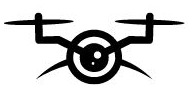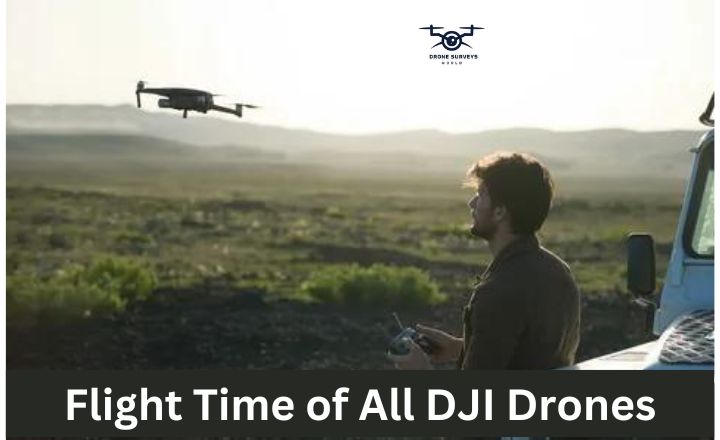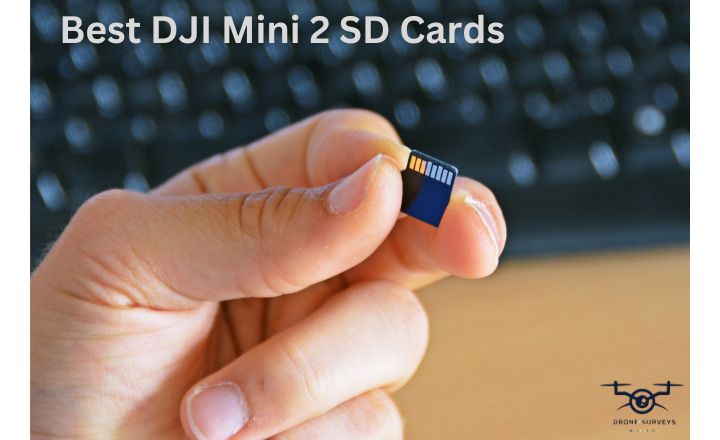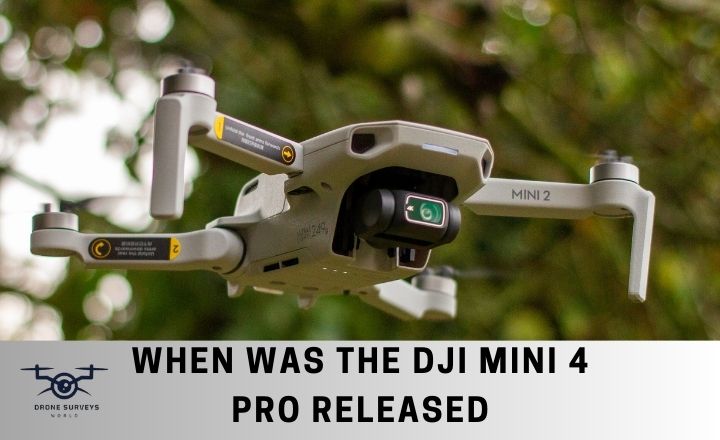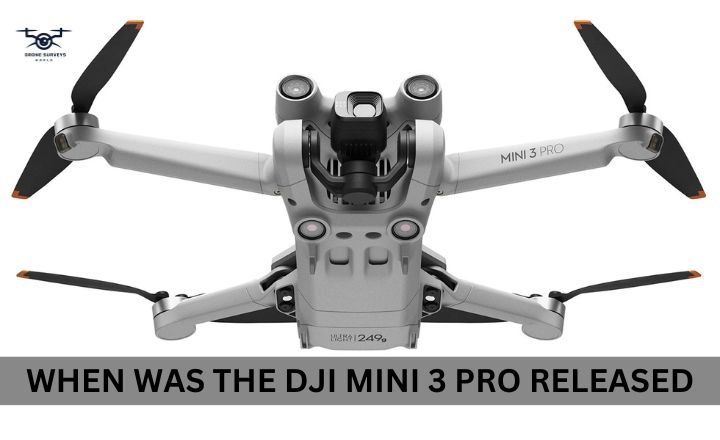Get ready to improve your aerial photography and videography skills with DJI drones. Flight Time of All DJI Drones guide will help you understand how long these drones can fly. Let’s explore the world of DJI drones and their flight times to enhance your drone piloting experience.
Flight Time of All DJI Drones
What is the flight time of all DJI drones? I have compiled a convenient list to assist you in answering this query.
| Drone Models | Flight Time |
| Mavic Pro | 27 minutes |
| Mavic Air | 21 minutes |
| Mavic Air 2 | 34 minutes |
| Air 2S | 31 minutes |
| Air 3 | 46 minutes |
| Phantom 1 | Under 10 minutes |
| Phantom 2 | 25 minutes |
| Phantom 3 | 25 minutes |
| Phantom 4 | 28 minutes |
| Mavic 2 Zoom | 31 minutes |
| Mavic Pro | 27 minutes |
| Mavic 3 Classic | 46 minutes |
| Mavic 3 Pro | 43 minutes |
| Mavic Mini | 30 minutes |
| Spark | 16 minutes |
| Tello | 13 minutes |
| Inspire | 27 minutes |
| Inspire 2 | 27 minutes |
| Inspire 3 | 28 minutes |
| Mini 2 | 31 minutes |
| Mini 2 SE | 31 minutes |
| Mini 3 | 34 minutes |
| DJI FPV | 20 minutes |
| Avata | 18 minutes |
How Long Can A DJI Drone Fly?
In drone technology, how long a DJI drone can fly is important for both fans and professionals. Most drones can fly for about 30 minutes now, but companies are trying to make them fly even longer. The Mavic Pro and Mavic 3 Pro are good examples, as they can fly for almost 30 minutes.
Better batteries and designs will likely make drones fly even longer. Brands like Holy Stone and Yuneec are competing to improve drones, which is good news for fans who want to fly longer. For people interested in aerial photography or just exploring from above, these improvements are exciting for drone technology.

How To Improve A DJI Drone Flight Time
To make your DJI drone fly longer, try to make it lighter by removing extra stuff. This helps the motor and battery work better so the drone can stay in the air longer. Plan your flights carefully by choosing a good route without strong winds or take done with obstacle avoidance quality to protect your drone. Take off, land smoothly, and fly steadily to save battery. Keep your drone’s software updated to get improvements that can make dji longest flight time.
Fly-In Ambient Conditions
To make your drone fly longer, test it in similar conditions to when you’ll be flying. Wind affects your drone, so adjust for better flying. Follow DJI’s testing conditions for longer flights.
Pick good times and places, like calm mornings, for better performance. Understand how weather affects flying to prepare for challenges. Matching your flight practices with tested conditions can help your battery last longer and improve performance.
Charge The Battery Before Flying
Always charge your drone’s battery fully before flying. A full battery improves DJI flight time and ensures smooth flying. It gives power to fly high and capture footage without interruptions.
Charge your battery before flying your DJI drone to have enjoyable flights. A well-charged battery is essential for endless possibilities in aerial photography and videography.
Reduce Payload
Think of your drone as an athlete preparing for a race. Just like too much weight can slow down an athlete, adding too many accessories to your drone can make it move slowly and less smoothly. To improve your drone’s flight, try reducing the extra things you attach to it. This will help your drone fly easily and smoothly through the air.
Use Power-Saving Modes
Optimizing power-saving modes on your DJI drone can enhance your flying experience. Turning off unnecessary features before flying can help your battery last longer and increase your flight time. Using power-saving mode for different functions can still help save your drone’s power.
Many drone fans don’t realize how power-saving options can help, but using a smaller battery can give you more time in the air to capture great footage.
Avoid Obstacles
DJI drones have advanced obstacle detection to keep flights safe, but it drains the battery. Pilots must balance safety and flight duration. As technology gets better, obstacle detection will improve in efficiency and accuracy.
Keeping up with drone technology developments is important for maximizing flying experiences and reducing risks. By staying informed, drone enthusiasts can make smart decisions about upgrading their equipment for better performance in challenging environments.
No Temperature Extremes
Flying drones in hot or cold weather can drain the battery faster and impact drone performance. Drone batteries can handle various temperatures, extreme conditions can reduce lifespan. It’s best to fly drones in moderate temperatures for longer battery life and better control.
Extreme temperatures can harm drone components and lead to crashes. Being mindful of weather conditions when flying can prevent issues from extreme temperatures and ensure a safe flight.
Don’t Stray Far From The Controller
When flying your DJI drone, staying close to the controller is important. Being too far weakens the signal and makes controlling the drone harder. Staying near the controller gives you a strong signal and better flight performance.
It helps you react quickly to obstacles or changes, crucial for getting great footage and making precise flying moves. Following this rule improves safety, saves battery life, and allows you to fly longer and more reliably.
Maintain Altitude
Maintaining altitude is important for a good flight because higher altitudes have less air, making it difficult for drone motors to work. To make your battery last longer, adjust how you fly or the weight you carry. You can fly longer and capture great aerial shots by monitoring your altitude and making adjustments. Understanding how altitude affects your drone prepares you for various conditions.
Calibrate Your Batteries
It is important to calibrate drone batteries to keep them working well. Regular calibration helps batteries work better, giving you more time to fly your drone. It also makes batteries last longer, saving you time and money. Calibrating helps you know when to stop using old batteries, which can prevent issues while flying. By calibrating your batteries regularly, you protect your equipment and make sure your flights are safe and reliable.
Bring Spare Batteries
When flying a drone, it’s important to be prepared. Imagine you’re in a beautiful aerial shoot, but your battery is running low. This can be disappointing, especially if you’re working on a client’s project and time is important. Having extra batteries is like a safety net, ensuring a sudden power loss doesn’t stop your mission.
For commercial drone operators, having spare batteries is not just useful, it’s necessary. Clients expect you to provide high-quality footage or data on time. By having extra batteries, you show that you are professional and reliable. It also shows that you value efficiency and understand the importance of smooth workflow in delivering great results.
Pick the right type of battery
Choosing the correct battery for your DJI drone is important for good performance and safety. Using batteries made for your drone model can prevent damage and make the drone last longer. Don’t swap batteries between different models or use third-party ones, as this can cause problems during flight.
What Factors Can Impact A DJI Drones Flight Time?
These factors can make flights shorter than expected.

Battery Type
The type of batteries used in a DJI drone affects its flight time. Using different types of batteries can make the drone perform better and fly longer than the manufacturer says. Solid-state batteries are known for their strong power and chemistry, making them a good choice for improving your drone’s flying abilities.
They allow longer and more efficient flights, giving users more time to explore from the air. Lithium polymer batteries are also a good option for extending flight time because they have good chemistry.
Wind
Flying a DJI drone in windy conditions can be tough. Wind can drain your battery faster and make flying risky. Wind speed and direction are important factors to watch during your flight. Strong gusts of wind can make your drone unstable and cause accidents.
Pilots must be skilled and make quick decisions when flying in windy conditions. Understanding how wind affects your drone is key to safe flights. By knowing the weather and adjusting your flying, you can fly longer and reduce risks from high winds.
Weight
The weight of DJI drones affects their flight time. Lighter drones can fly longer because they need less power to stay in the air. They also use batteries more efficiently, allowing them to cover more distance before needing a recharge.
Heavier drones are more wind-resistant and durable, making them better for flying in tough conditions. Finding the right balance between weight and features is important when choosing a DJI drone that fits your needs and flying conditions.
Temperature
Temperature can affect how long a DJI drone can fly. Hot or cold weather can harm the battery. Check the manual or website for the right temperatures for using and charging your battery. Not following these rules can make the drone fly less and damage it. Store your battery right when not using it to make it last longer and work better.
Altitude
Maintaining a steady altitude is important for making a DJI drone’s battery last longer and extending its flight time. Changing altitudes often gives the drone more power but drains the battery faster. Wind speed and direction can also affect flight time.
Power-to-weight Ratio
Battery size, motor efficiency, and weight impact how long it can fly. The power-to-weight ratio is crucial for determining flight time. A higher ratio can lead to faster acceleration and dynamic moves, but it may use the battery more quickly.
Density Altitude
Density altitude is an important factor that affects how long a DJI drone can fly. As altitude and temperature change, so does the air’s density. This affects how well the drone can fly, drone flying time and how long its battery will last. When the density altitude is higher, the drone has to work harder to fly and move through less dense air.
This extra effort leads to shorter battery life and lower performance. Pilots need to consider these factors when planning flights in different weather to maximize flight time and ensure safety. Understanding how density altitude affects flight performance helps pilots make better decisions to improve their flying experience while staying safe.
Rotor And Propeller Condition
A drone’s performance depends a lot on its rotor and propeller parts. These parts are crucial for stabilizing the drone, lifting it, and ensuring it flies well. Even small damage or wear on these parts can affect how long the drone’s battery lasts and how long it can fly.
People don’t always consider how dirt and sand can get into the rotor and propeller parts, causing them to wear out faster. Regularly checking and cleaning these parts can make them last longer and help the drone fly better.
Battery Age
The battery’s age affects how long a DJI drone can fly. As a battery ages, it can’t hold or give power, so the drone flies for less time. Using and charging the drone often can accelerate the battery’s age, making it perform worse.
The weather also matters for how long the drone can fly. Very hot or cold temperatures can make the battery work less efficiently, making reactions happen too fast or slowing them down. To ensure your drone flies for a long time and lasts, keep it at the right temperature.
Drone With Longest Flight Time
Drones have changed how we film from above. The DJI Matrice 300 RTK drone can fly up to 55 minutes, allowing us to capture great aerial shots without frequent landings. This is the longest-flying drone. Its smart system helps it avoid obstacles, making it easy to fly in tricky places.
DJI drones have long flight times, ranging from 20 to 38 minutes. The DJI Mini 2 drone can fly for up to 31 minutes, longer than similar drones. The DJI Avata drone has a longer flight time of 18 to 40 minutes, which is better than other drones.

Conclusion
Knowing how long DJI drones can fly is important for fans and professionals. Different Flight Time of All DJI Drones suit various needs, from short fun flights to longer business tasks. By comparing the flight times of each model, users can choose a drone that fits their needs. Factors like battery life, weight, and flying conditions are crucial when picking the right drone. Understanding the flight times of all DJI drones helps users make the most of their drone experience. Choose your DJI drone wisely to enhance your flying adventures!
Frequently Asked Questions
Which drone can fly for 1 hour?
Some drones can fly for up to 1 hour. The DJI Mavic 2 Pro is a popular choice with a maximum flight time of about 31 minutes per battery. By changing batteries, you can fly for almost an hour. Another drone with a long flight time is the Autel Robotics EVO II, which can fly for up to 40 minutes on one charge.
Which Drone Model Offers up to 1 Hour of FlightTime?
The DJI Mavic 2 Pro is a popular drone known for its impressive one-hour flight time.
